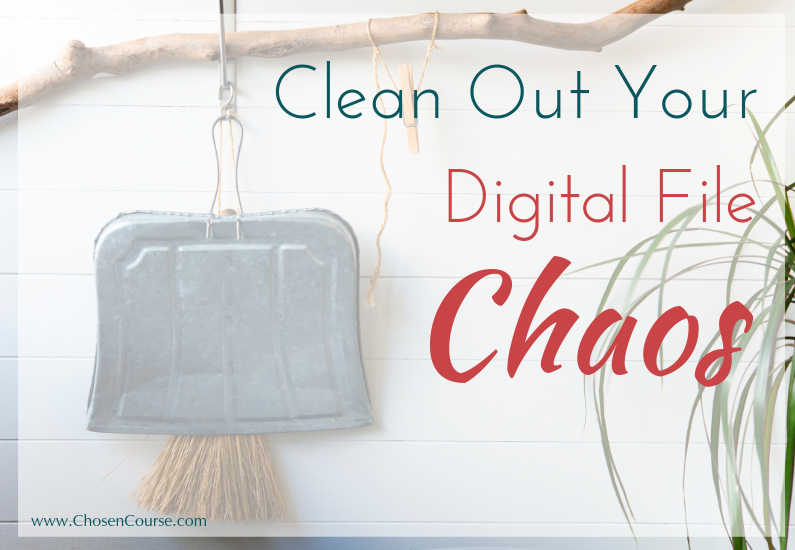As a location-independent entrepreneur, my whole world is digital these days. Documents, Music, Photos, Videos, Finances, Communication… everything!! And that’s true for most location-independent and digital nomad entrepreneurs. Traveling with a file box or even a briefcase or backpack worth of paperwork, files, or other “work stuff” is just unrealistic.
One digital nomad entrepreneur told me that her goal was to be able to run her entire business from an iPad. How amazing that such a goal is possible these days! We truly do live in amazing times when if we have power, internet, and a tablet computer we can run our lives and make a living.
However, there is a frequently unmentioned underbelly of chaos that can happen when your whole world goes digital… Information overload and digital chaos.
If your desktop has ever been covered in icons…
If you’ve ever spent 5+ minutes hunting around for the right version of a particular document…
If you’ve ever searched through your thousands of photos and felt overwhelmed trying to find the one you want…
Then, you’ve experienced digital chaos. While we might not have to dig around through piles of physical stuff as often as our more traditional friends, we have our own intangible chaos that can still hold us up and slow down our productivity. Let’s talk about how to conquer your digital chaos…
Phase 1: Identify the problem areas
When we’re trying to organize physical spaces you can quickly open a closet door or just walk into a room and see there’s a problem. When we’re talking about digital disorganization it easy to ignore or not recognize that chaos is growing. We tell ourselves that it’s “good enough”… right up until it isn’t any more. So, whether it’s your files, your photos, or your financial data, the first step is to acknowledge that there’s a problem that needs to be addressed.
At some point just allowing the mess and confusion to remain will cost us in time, energy, or even money because we have to keep buying more storage capacity (whether cloud-based or physical hard drives). So, consider, what areas of your digital world are in need of some more organization, and make a list of those projects.
Phase 2: Use the 8 Steps to Organizing Success
When I ran my professional organizing company and focused on what I refer to as the “tangible organizing” of client’s stuff and spaces, I developed a process called “The 8 Steps to Organizing Success” which was aimed to not just “get organized,” but ensure that you’re able to stay organized consistently.
Those same 8 Steps can apply to organizing digital chaos as well, but you might need to do them in a slightly different order. Let’s walk through them quickly and discuss how they apply to your digital chaos by using organizing digital photos as an example:
- Create Your Vision – What’s the outcome you’re working toward? When your photos are “Organized,” then what will be true? What will be different? How will you know that you’re “done?”
- Assign Homes – Are your photos going to live on iCloud? Dropbox? Both for redundancy/security? How will you backup & protect your digital photos in case of a hard drive failure on your phone or computer? With physical items steps 2 & 3 happen later in the process, but with digital “stuff” this decision about where they’ll live comes first.
- Buy/Locate Appropriate Containers – Do you want to use photo organizing software to make searching easier or be able to quickly create photo albums, videos, or similar ways to share your collection? Research your options and select one that feels good for your needs. I use the Photos app built into my Mac, but there are many great ones out there.
- Sort Everything Into Categories – Identify the “groups” or categories of items. How do you want your photos to be grouped together? By location taken? By content/subject- who’s in them or landscape/travel shots? By date?
- Weed/Relocate Each Category – It’s much easier to make decisions about what stays vs. what goes after you bring all of a similar category together. Do you really need the 5 blurry photos of that castle when you have 2 really good shots?
- Setup & Label Final System – To some degree with digital files you’re doing this as you’re sorting & weeding, but you want to make sure that there’s a clear organizational structure to your final system – tags, folders, albums, or similar elements having a clear and consistent naming convention will help you make sure that your system is sustainable.
- Identify & Develop Habits – I doubt you’re done taking photos ever again… so there will be new ones constantly added to the system. What specifically will you need to do (and how frequently) to ensure that your system is maintainable moving forward?
- Evaluate & Update – Over time the system that worked perfectly for you last year or several years ago won’t quite fit any more. That’s normal… needs and priorities change. So, be prepared and comfortable with the fact that no system is permanent and you’ll want to give it a tune up or overhaul from time to time in order for it to grow with you.
Now, getting through all of these steps for each of your chaotic collections is likely not a project for a single afternoon (as much as we might wish it were). The same was true when I’d talk with my organizing clients about the chaos in their basement or office. In fact, I typically discouraged them from trying to “blitz” their way through the project in a weekend. Why? Because often if you burn yourself out with a blitz, then you somehow convince yourself that it’s “done” and you don’t need to care for it any more…. and the disorganization starts immediately creeping back.
Blitzed projects rarely sustain for the long term. So, what can you do instead? Schedule 30-90 minute blocks to chip away at the chaos. Particularly with digital disorganization, it’s hard to justify spending a whole day or week just organizing your photos, right? After all, you have other really important tasks to do. So, just do 30-90 minutes (or one to three pomodoros if that’s a strategy that works for you.) Push it forward with one solid working session, then before you finish that session, look at your calendar and schedule when you’ll do your next block of digital organizing.
If the project is pressing, then do one brief session each day until it’s ready for maintenance mode. If not, then one session a week or even one a month is still progress.
Phase 3: Maintain the System
One of the biggest organizing myths is that you can just “get organized,” and then it will be done. As the 8 Steps above make clear, the final two steps are about maintaining the system you’ve developed by building the needed habits. That ongoing maintenance of the system takes some time and attention, but it can also be a GREAT task to delegate to a team member. If you have something that’s simple and repetitive like maintaining your photo organizing system, then teach your VA the process you use, and delegate maintaining the system to them.
If you don’t have a VA, then you’ll want to decide how you prefer to maintain it yourself. Does it need just a few minutes a day? 30 minutes once/week? or an afternoon once per month? Figure out a maintenance cadence that will work for you, and fit it into your regular daily or weekly routines or schedule it on a monthly basis if appropriate.
Next Steps
All systems need maintenance, but just get curious about how to make it as easy for yourself as possible. Notice ways if changing the order of certain steps makes the outcome easier. It’s all about refining your signature business systems and processes. If this is something you want to start doing better in your business, then you’ll want to grab a copy of my eGuide:
Your Freedom Map:
A Location-Independent Entrepreneur’s Guide
to End the Grind & Create a Business That Runs on Auto-Pilot.
It will help you:
- Brainstorm the processes that you can simplify, document, and delegate to start freeing your time and energy.
- Learn the difference between a system, a process, and a tool so that you can always be solving the right problem not just churning through new productivity apps.
- Get a step-by-step approach to clarify your business processes so they become easier to do and to delegate.
- Identify the areas of your business where you’ve been “flying-by-the-seat-of-your-pants” for too long and wasting time and energy.
- Discover the 7 Core systems that you NEED to run ALL 50+ Business



